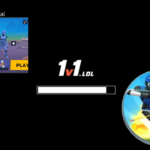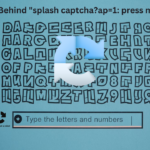splash captcha.ap=1 digital security and user experience, the term “splash captcha?ap=1: press magazine” presents a fascinating puzzle. While the phrase might seem cryptic initially, breaking it down reveals potential connections to user interfaces, authentication methods, and specific media-related applications. In this article, we will dive deep into each component of this term, explore its possible meanings, and speculate on its usage in digital environments.
What is SplashUI?
The first part of our term, “splash,” refers to a user interface (UI) type. A “splash UI” is typically the initial screen that greets users when they open an application or visit a website. It’s designed to be visually appealing while providing essential information or guiding the user through a specific process, like logging in or completing a CAPTCHA.
A splash screen often includes branding elements, introductory content, or loading indicators, setting the tone for the user experience. The term “splash” could indicate a user interface designed to handle these initial user interactions, possibly incorporating elements like CAPTCHA for verification.
Also Read: Three Reasons The Ps5 Star Wars: Kotor Remake is Such a Huge …
Understanding CAPTCHA
CAPTCHA, “Completely Automated Public Turing test to tell Computers and Humans Apart,” is a widely used security measure to differentiate between human users and automated bots. In the context of “splashui captcha?ap=1: pressmagazine,” the mention of CAPTCHA suggests an authentication step that might be integrated within the splash UI. This could be a security measure to ensure that a legitimate human user performs the interaction or access rather than an automated system.
CAPTCHAs come in various forms, including text-based challenges, image recognition tasks, and invisible CAPTCHAs that analyze user behaviour to determine authenticity. Integrating a CAPTCHA within a splash UI would be a seamless way to secure the initial entry point to a website or application.
Decoding “ap=1”
The segment “ap=1” within “splash captcha?ap=1: pressmagazine” is intriguing, as it resembles a parameter commonly found in URLs or code. In programming, parameters like these are often used to pass specific values or trigger certain behaviours within a system. For instance, “ap=1” could be an argument that activates a particular mode or function within the splash UI, potentially related to the CAPTCHA process.
This parameter might enable or configure the CAPTCHA in a specific way, or it could be a toggle for a feature tied to the press magazine context mentioned later in the term. Without concrete information, we can only speculate, but it’s clear that “ap=1” plays a role in the functionality or behaviour of the UI or the authentication process.
The Role of Press Magazine
Finally, we arrive at “pressmagazine,” a term that references a publication or media outlet. Including “pressmagazine” in “splash captcha?ap=1: pressmagazine” suggests that this entire setup could be related to a specific press or media-related application.
One plausible scenario is that “splash captcha?ap=1: press magazine” is a media organization’s system for authenticating and managing access for journalists or contributors. In this case, the splash UI would be the entry point for users accessing press-related content or resources. The CAPTCHA would ensure that only legitimate human users gain access, and “ap=1” could activate specific settings tailored to this context.
Practical Applications
Given these interpretations, the term “splash captcha?ap=1: press magazine” could be applied in several scenarios:
- Press Credential Verification: A media outlet could use this system to verify the identity of journalists applying for press credentials. The splash UI might greet applicants with a CAPTCHA challenge to prevent automated spam or fraudulent applications.
- Subscriber Authentication: This setup could be used to authenticate subscribers for a digital magazine or news website. The “ap=1” parameter might indicate a special access level or content type available only to verified users.
- Content Management Systems: In content management systems (CMS) used by press or media organizations, this could be a security measure integrated into the backend, ensuring that only authorized personnel can access or publish content.
Addressing the Challenge of Uncertainty
The lack of specific information on “splash captcha?ap=1: press magazine” underscores the challenge of interpreting such terms without additional context. This could be due to the phrase being part of a proprietary system, limited access, or even an internal tool used by a particular organization. It’s also possible that this term is relatively new or niche, making it less visible in mainstream documentation or search results.
Final Thoughts
While the exact meaning of “splash captcha?ap=1: press magazine” remains somewhat elusive, exploring its components provides valuable insights into its potential applications. Integrating a splash UI with CAPTCHA functionality highlights the importance of secure, user-friendly interfaces in today’s digital landscape, whether related to press credentials, media access, or a specialized content management system.
For those who encounter this term in a professional or technical setting, understanding its possible meanings can help them navigate and implement systems that prioritize user experience and security. As digital platforms evolve, terms like “splash captcha?ap=1: pressmagazine” remind us of the complexity and innovation driving these developments.


















